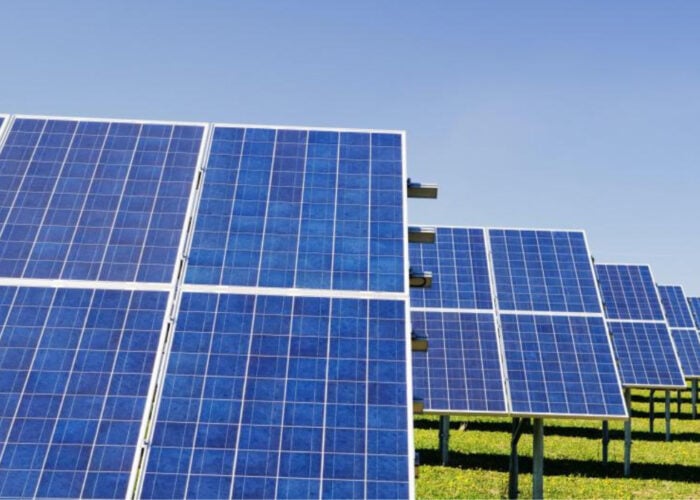Report on Honeywell Ionic™ Modular All-in-One Battery Energy Storage System (BESS)
Introduction
On September 10, 2025, Honeywell introduced the Ionic™ Modular All-in-One, a comprehensive battery energy storage system (BESS) engineered for the commercial and industrial sectors. This system is designed to address critical energy management challenges and significantly contributes to the achievement of several United Nations Sustainable Development Goals (SDGs) by promoting clean energy, resilient infrastructure, and climate action.
System Overview and Technical Specifications
The Honeywell Ionic™ is an end-to-end energy storage solution that integrates lithium-ion battery technology with an advanced control and energy management system.
Key Features
- Modular Design: The system features a compact, self-contained enclosure, allowing for flexible and scalable power storage options ranging from 250 kWh to 5 MWh.
- Integrated Control System: The Ionic™ Control and Energy Management system provides advanced analytics and autonomous control to optimize energy consumption, manage costs, and ensure grid stability.
- Cybersecurity: The platform incorporates ISA Secure 2 cybersecurity standards to protect against network vulnerabilities and cyber threats, ensuring secure and reliable operations.
- Operational Flexibility: Customers can opt for fully integrated onsite systems or utilize tailored agreements where the system is managed by Honeywell’s Remote Operations Center.
Alignment with Sustainable Development Goals (SDGs)
The Honeywell Ionic™ BESS directly supports the global sustainability agenda by advancing key SDGs through its technological capabilities.
-
SDG 7: Affordable and Clean Energy
- The system facilitates the integration of renewable energy sources, such as solar and wind, by storing excess energy and dispatching it when needed, thereby ensuring a more reliable and clean energy supply.
- It enhances grid stability by absorbing fluctuations in energy demand, contributing to universal access to affordable, reliable, and modern energy services.
-
SDG 9: Industry, Innovation, and Infrastructure
- As an advanced technological innovation, the Ionic™ BESS helps build resilient and sustainable infrastructure for commercial and industrial facilities.
- It promotes energy efficiency and supports the upgrade of industrial infrastructure for enhanced sustainability and resource-use efficiency.
-
SDG 11: Sustainable Cities and Communities
- By providing reliable backup power and stabilizing local energy grids, the system enhances the resilience of urban commercial and industrial zones.
- It supports the development of sustainable energy systems within communities, making them safer, more resilient, and sustainable.
-
SDG 13: Climate Action
- The BESS is a critical tool for climate change mitigation. By enabling greater adoption of renewable energy, it helps reduce reliance on fossil fuels and lower greenhouse gas emissions.
- It improves overall energy efficiency, which is a fundamental strategy for combating climate change and its impacts.
Market Application and Availability
Target Segments
The primary markets for the Honeywell Ionic™ are commercial and industrial organizations seeking to optimize energy costs, ensure power reliability, and meet sustainability targets.
Conclusion
The Honeywell Ionic™ Modular All-in-One BESS is a significant technological solution that aligns commercial objectives with global sustainability imperatives. By providing a scalable, secure, and intelligent energy storage system, it empowers organizations to advance their contributions toward achieving Sustainable Development Goals 7, 9, 11, and 13, fostering a transition to a more sustainable and efficient energy future. The product is now available globally.
Analysis of Sustainable Development Goals (SDGs) in the Article
1. Which SDGs are addressed or connected to the issues highlighted in the article?
- SDG 7: Affordable and Clean Energy
- SDG 9: Industry, Innovation, and Infrastructure
- SDG 11: Sustainable Cities and Communities
- SDG 13: Climate Action
2. What specific targets under those SDGs can be identified based on the article’s content?
-
SDG 7: Affordable and Clean Energy
- Target 7.2: By 2030, increase substantially the share of renewable energy in the global energy mix. The article states that the Honeywell Ionic™ system helps businesses “better integrate renewables,” which directly supports increasing the share of renewable energy. Battery storage is crucial for managing the intermittency of sources like solar and wind.
- Target 7.3: By 2030, double the global rate of improvement in energy efficiency. The product is designed to “optimize energy costs” and “optimize energy consumption.” By storing energy during low-demand periods and releasing it during high-demand periods, the system enhances overall energy efficiency for commercial and industrial users.
- Target 7.a: By 2030, enhance international cooperation to facilitate access to clean energy research and technology… and promote investment in energy infrastructure and clean energy technology. Honeywell, a global company, is introducing an advanced clean energy technology (BESS) that is “available now globally,” facilitating access to this critical infrastructure component.
-
SDG 9: Industry, Innovation, and Infrastructure
- Target 9.1: Develop quality, reliable, sustainable and resilient infrastructure. The article highlights that the BESS ensures “grid stability” and provides “back-up power when needed.” This contributes directly to creating more reliable and resilient energy infrastructure for industrial and commercial facilities.
- Target 9.4: By 2030, upgrade infrastructure and retrofit industries to make them sustainable, with increased resource-use efficiency and greater adoption of clean and environmentally sound technologies. The Honeywell Ionic™ is presented as a “complete energy automation system” and a clean technology for commercial and industrial segments to “use energy more effectively” and support the “energy transition.”
-
SDG 11: Sustainable Cities and Communities
- Target 11.b: By 2020, substantially increase the number of cities and human settlements adopting and implementing integrated policies and plans towards… resilience. The BESS’s function of providing “back-up power” is a key element in building resilience for businesses and communities against grid failures or emergencies, making the energy supply more secure and sustainable.
-
SDG 13: Climate Action
- Target 13.2: Integrate climate change measures into national policies, strategies and planning. The article aligns Honeywell’s business with the “energy transition” megatrend. The deployment of BESS technology is a practical measure that supports climate action strategies by enabling a shift away from fossil fuels towards renewable energy sources.
3. Are there any indicators mentioned or implied in the article that can be used to measure progress towards the identified targets?
-
For SDG 7 (Affordable and Clean Energy)
- Implied Indicator for Target 7.2: The amount of renewable energy capacity integrated into the grid. The article implies that the adoption of BESS will allow for more renewables, so tracking the deployment of such systems alongside renewable energy sources would be a measure of progress.
- Implied Indicator for Target 7.3: Reduction in energy costs and consumption for commercial and industrial users. The article’s claims of helping to “optimize energy costs” and “optimize energy consumption” suggest that measuring energy savings would be a key performance indicator.
-
For SDG 9 (Industry, Innovation, and Infrastructure)
- Implied Indicator for Target 9.1: Reduction in power outage duration or frequency for facilities using the BESS. The promise of “grid stability” and “back-up power” implies that a key metric would be improved reliability and reduced downtime.
- Implied Indicator for Target 9.4: The rate of adoption of BESS technology in commercial and industrial sectors. The global availability of the Honeywell Ionic™ suggests that its market penetration could serve as an indicator of industries upgrading their infrastructure.
-
For SDG 11 (Sustainable Cities and Communities)
- Implied Indicator for Target 11.b: The number of critical commercial and industrial facilities equipped with resilient backup power systems. The article’s focus on providing backup power suggests that the number of installations contributes to the overall resilience of the community’s infrastructure.
-
For SDG 13 (Climate Action)
- Implied Indicator for Target 13.2: Investment in and deployment of energy transition technologies. The launch and sale of products like the Honeywell Ionic™ BESS represent a tangible investment in the technology needed to achieve climate goals.
4. Create a table with three columns titled ‘SDGs, Targets and Indicators” to present the findings from analyzing the article.
| SDGs | Targets | Indicators (Implied from Article) |
|---|---|---|
| SDG 7: Affordable and Clean Energy |
7.2: Increase the share of renewable energy.
7.3: Improve energy efficiency. 7.a: Promote investment in and access to clean energy technology. |
Amount of renewable energy integrated due to BESS deployment.
Reduction in energy costs and consumption for users. Global sales and deployment of BESS technology. |
| SDG 9: Industry, Innovation, and Infrastructure |
9.1: Develop reliable, sustainable and resilient infrastructure.
9.4: Upgrade infrastructure and industries with clean technologies. |
Reduction in power outage duration/frequency for facilities.
Adoption rate of BESS technology in commercial and industrial sectors. |
| SDG 11: Sustainable Cities and Communities | 11.b: Implement plans for resilience. | Number of facilities equipped with resilient backup power systems. |
| SDG 13: Climate Action | 13.2: Integrate climate change measures into policies and planning. | Level of investment in and deployment of energy transition technologies like BESS. |
Source: honeywell.com







